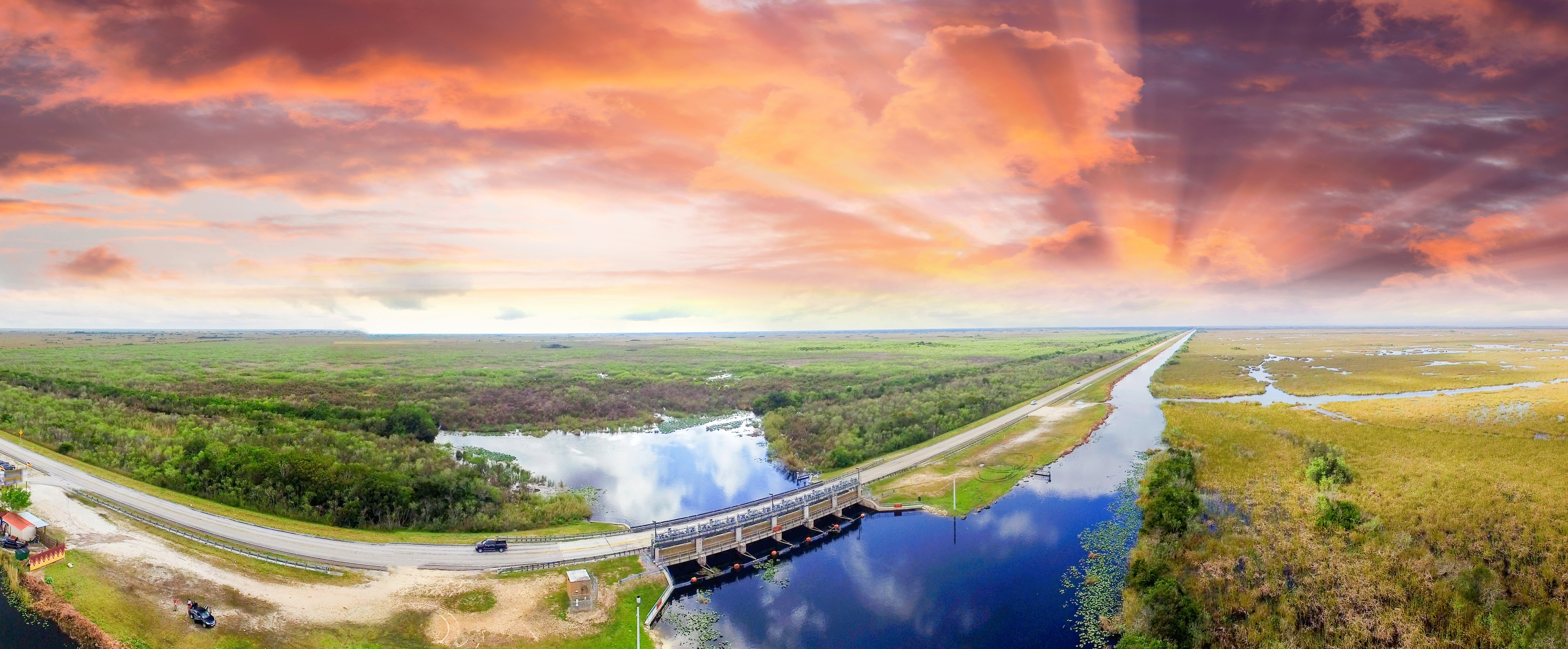Exploring the Everglades: Wildlife in Florida
With 1.5 million acres of water, woodlands and Florida wildlife, America’s Everglades national park is the largest subtropical wilderness in the country. With hiking trails, nature routes, sailing, snorkelling and more, it’s a true haven for lovers of the great outdoors.

Take the trip from Homestead to Flamingo
The main road that cuts through the Everglades national park from its entrance at Homestead to the Flamingo Visitor Centre on Florida Bay was once called "38 miles of nothing", but that couldn’t be further from the truth.
Passing through almost every major natural habitat – from marshland to forestry, it’s arguably the best place to see Florida wildlife in the whole state.
Some tips first of all: drive slowly, make regular pit stops (there are a myriad of observation towers, hiking routes, and boardwalks) and keep on the lookout for Florida animals in their surroundings.
See wading birds and the Sunshine State’s famous alligators at close (but safe!) range on the Anhinga Trail boardwalk, or follow the Mahogany Hammock Trail, home to the largest living mahogany tree in the United States.
Turtles and herons are regularly spotted on the Anhinga trail – as are anhinga, or snake birds, of course – and the route is one of the park’s most popular.
Just before reaching Flamingo, be sure to park up to hike the 1.6-mile Snake Bight Trail. The path leads to a viewing platform overlooking the beautiful Florida Bay.
Explore Florida wildlife by boat
From Flamingo, you’ll need a boat to explore the wild beaches of Cape Sable and Florida Bay, and you’ll find plenty of rental opportunities nearby.
So long as winds are light enough, you can explore from a canoe, putting you in close proximity to numerous species of shorebird, pelican and gull – particularly at low tide. Canoeing into the aforementioned Snake Bight also offers an easy day trip that’s great for bird spotting.
In the case of strong winds, head to the Buttonwood Canal and into Coot Bay, or portage across the Bear Lake Canoe Trail. If you have time, take a trip to Carl Ross Key – an island surrounded by Everglades species such as manatees, white pelicans and more American Alligators.
Hike across the Corkscrew Swamp
Gateway to the western Everglades, the Corkscrew Swamp Sanctuary protects over 13,000 acres of pinelands, wetlands and bald-cypress swamp.
Trace the 2.25-mile boardwalk that winds through the swamp and you’ll pass cypress trees that are over 500 years old – plus the rare blooming ghost orchid if you’re lucky. The drooping tendrils of this white, otherworldly plant almost give it the appearance of a dancing spectral figure.
Snorkelling in Biscayne National Park
Below the surface of Homestead’s Biscayne Bay is a patchwork of unspoilt coral reef, jostled alongside half a dozen historical shipwrecks.
Snorkelling its spectacular crystal-clear waters is the best way to see the Biscayne National Park's marine life. Here sits the third largest coral reef in the world, and a wonderfully preserved habitat for loggerhead turtles, manta rays and over 600 species of fish.
If you’d rather keep your head above water, there’s overnight camping at the nearby Elliot and Boca Chita Keys, fishing, bird watching and beachside idling, all at your disposal. The park also rents out kayaks and canoes, while also providing glass-bottom boat rides.
When to visit the Everglades
Make use of the Everglade’s cooler temperatures from December to March, where you’ll benefit from increased ranger programs, dryer weather and wildlife-viewing opportunities in abundance.
If you're ready to start your next adventure, hire a car with Alamo today!
Start a Reservation*Indicates required field
© 2025 Enterprise Holdings, Inc. All rights reserved.
